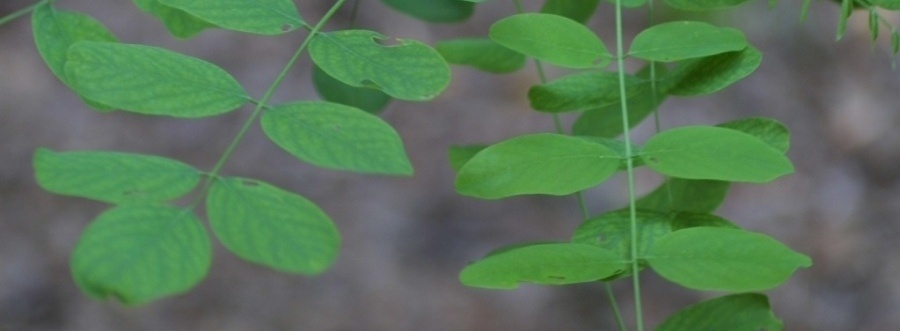
References
Armstrong, W.P., Legume Family (Fabaceae). Wayne’s Word.
<URL: Avanzato, M.V., A.G. Laney and I.E. Tzanetakis. 2012. High incidence
of seed transmission of Papaya ringspot virus and Watermelon mosaic
virus, two viruses newly identified in Robinia pseudoacacia. European
Journal of Plant Pathology 134: 227-230.
Boring, L.R. and W.T. Swank. 1984. The Role of Black Locust (Robinia
pseudoacacia) in Forest Succession. Journal of Ecology 72: 749-766.
Campbell, N. A. 2008. Biology 8th Edition. Pearson Education Inc.,
San Fransisco, California, USA.
Crossley, Jr., W.W. Hargrove and T.R. Seastedt. 1983. The Effects of
Low-Level Consumption by Canopy Arthropods on the Growth and Nutrient
Dynamics of Black Locust and Red Maple Trees in the Southern
Appalachians. Ecological Society of America 64: 1040-1048.
Fine Gardening 2013. <URL:
Garden Guides 2010. <URL:
http://www.gardenguides.com/taxonomy/black-locust-robinia-pseudoacacia/>.
Accessed 25 March 2013.
Global Invasive Species Database 2005. <URL:
http://www.issg.org/database/species/ecology.asp?si=572>. Accessed
27 March 2013.
ITIS 2013. <URL:
Hodgkiss, R.J. Order Fabales – Legumes. The Succulent Plant Page.
<URL: Huntley, J.C. Black Locust. Silvics of North America. <URL: Kew 2013. <URL: Kew 2013. <URL: Motta, R., P. Nola and B. Roberta. 2009. The rise and fall of the
black locust (Robinia pseudoacacia L.) in the “Siro Negri” Forest
Reserve (Lombardy, Italy): lessons learned and future uncertainties.
Annals of the New York Academy of Sciences 66: 410-420.
Penn Veterinary Medicine 2013. <URL: Right Diagnosis 2011. < URL: Russel, A.B. Robinia pseudoacacia. Poisonous Plants of North
Carolina. <URL: Steindor, K., B. Palowski, P. Goras, A. and Nadgorska-Socha. 2011.
Assessment of Bark Reaction of Select Tree Species as an Indicator of
Acid Gaseous Pollution. Polish Journal of Environments Studies 20:
619-622.
Sidewell 2006 USDA Plants Database 2013. <URL:
Return Home
5Fmanual/table%5Fof%5Fcontents.htm>.
Accessed 2 April 2013.
Robiniapseudoacacia/tabid/5479/Default.aspx>.
Accessed 3 April 2013.
symptoms.htm>.
Accessed 2 April 2013.
Eukarya/Plantae/Anthophyta/Dicotyledonae/>.
Accessed 4 April 2013.